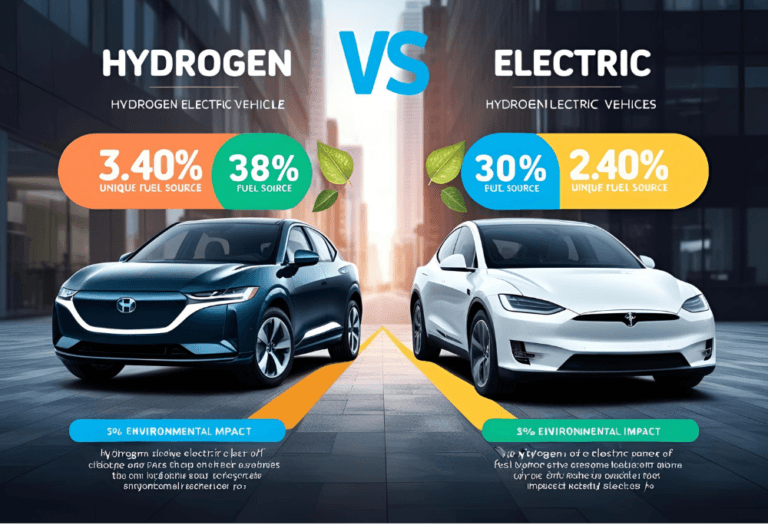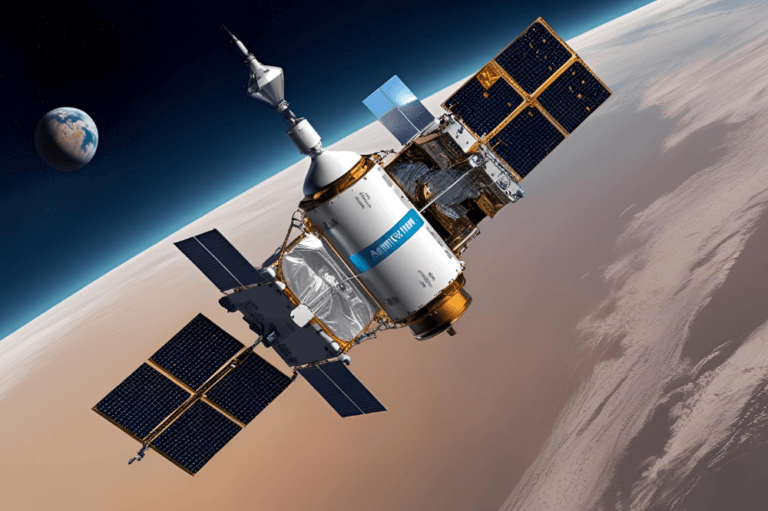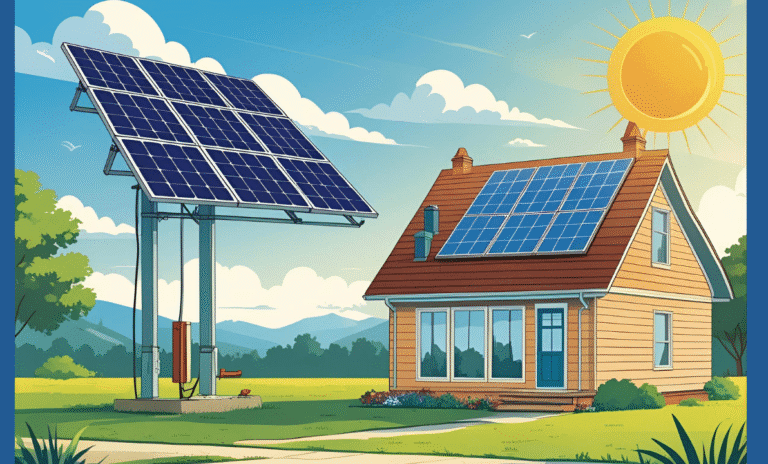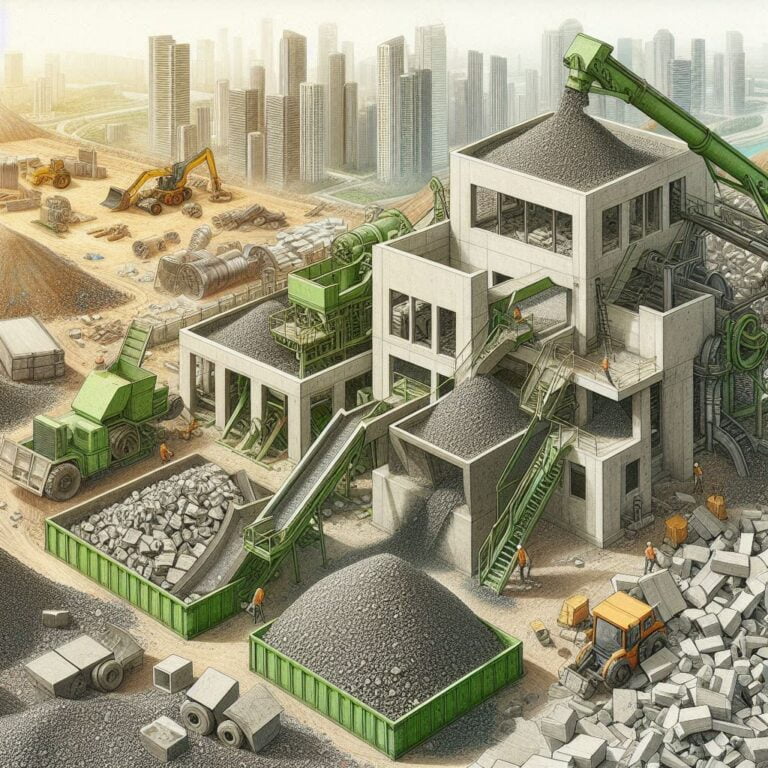Introduction – Why Floating Cities Are Captivating
In an age where sea level rise, rapid urbanization, and land scarcity are becoming urgent global challenges, the idea of floating cities has captured the world’s imagination. Picture entire neighborhoods resting on the ocean, resilient against floods, or futuristic floating cities in the sky, suspended on aerial platforms above the clouds. These concepts are not just science fiction anymore—they are being actively explored as humanity seeks creative ways to adapt to climate and population pressures.
At its core, a floating city refers to a self-sustaining human settlement built on platforms that rest upon water, air, or in some cases, a hybrid of both. Ocean-based floating cities are envisioned as modular, renewable-energy-powered communities capable of supporting thousands of residents. Meanwhile, sky-based concepts explore advanced aerostatic or aeronautic engineering—giant platforms buoyed by helium, solar-powered drones, or even magnetic levitation.

What makes floating cities so captivating is their dual appeal: they are both a necessity and a dream. On one hand, they present practical solutions to environmental crises, offering safe havens in flood-prone regions and new frontiers for population growth. On the other, they embody humanity’s age-old fascination with reimagining where and how we live. From ocean megastructures to aerial habitats, floating cities promise to expand the very definition of urban life, merging resilience, sustainability, and imagination into one futuristic vision.
History of Floating Cities – Myths, Inspiration, and Early Concepts
The history of floating cities stretches back much further than most people realize, blending mythology, traditional engineering, and futuristic speculation. Humanity has long imagined alternative worlds where entire civilizations could thrive off the ground or upon the water.
In ancient myth, the legendary city of Atlantis—a technologically advanced civilization said to have sunk beneath the waves—has inspired countless dreams of aquatic living. Similarly, many cultures told stories of sky-cities, places where gods or enlightened beings dwelled among the clouds. These myths reveal that the fascination with floating cities is deeply embedded in human imagination.
Beyond mythology, early examples of semi-floating settlements existed across the world. The Uros people of Lake Titicaca in Peru built floating reed islands that supported entire communities, while Southeast Asia developed extensive stilt houses and amphibious homes, adapted to shifting tides and floods. These traditions form a living history of floating cities, showing how people used engineering ingenuity to survive in water-dominated landscapes.

In the early 20th century, architects and engineers began formalizing radical proposals for floating architecture. Concepts like futuristic ocean liners that doubled as cities, or modular “seaborne platforms” designed for military or industrial purposes, hinted at the possibility of permanent ocean settlements. Meanwhile, speculative fiction and visionary architects began introducing the idea of floating cities in the sky. From dirigible-based habitats in pulp science fiction to Buckminster Fuller’s geodesic domes suspended in the atmosphere, aerial living became a recurring motif in design and literature.
Together, these threads—myth, indigenous practices, early engineering, and speculative design—make up the history of floating cities. Each era added new layers of possibility, transforming a dream of survival and imagination into the foundation for today’s research on resilient, sustainable floating habitats.
Modern Proposals & Designs
Today, the dream of floating cities is no longer confined to myths or science fiction. A growing number of companies, institutes, and architects are proposing concrete models that merge advanced engineering with sustainability.
One of the most prominent players is Oceanix, a New York–based company working with the United Nations on prototype floating communities. Their design envisions modular hexagonal platforms anchored in shallow coastal waters, each capable of housing 300 residents. By linking multiple modules, Oceanix aims to create scalable floating cities for thousands, equipped with renewable energy, closed-loop water systems, and aquaponic food production.
Similarly, the Seasteading Institute, founded by Patri Friedman and initially supported by tech investor Peter Thiel, has promoted the idea of politically independent ocean settlements. Their focus is less on urban design and more on governance—floating cities as sovereign entities where new forms of political and economic systems could be tested.
Beyond these, several experimental “dynamic island projects” and artificial floating islands have been proposed in Europe, Asia, and the Middle East. Some of these integrate luxury real estate with ecological features such as artificial reefs or algae farms, creating not only livable space but also marine habitats.
Key design elements across these proposals include robust anchoring systems to keep platforms stable in coastal waters, or free-floating models that could drift in international seas. Housing modules are typically modular, lightweight, and storm-resistant. For utilities, floating cities rely heavily on renewable energy sources such as solar panels, wind turbines, and even tidal generators. Water supply comes from desalination systems, while circular waste management ensures minimal environmental footprint. Transportation within these cities often involves electric boats, drones, and walkable pathways rather than cars.
The concept of floating cities in the sky pushes imagination even further. Some proposals include tethered aerial platforms—massive helium-filled balloons anchored to the ground—that could support lightweight structures. Others explore swarms of drone-supported modules or even rotating platforms buoyed by atmospheric lift. While these remain largely speculative, they echo visions of “cloud cities” from science fiction, where humanity rises above Earth’s surface to escape overcrowding or natural disasters. Engineering challenges are immense—weight distribution, energy supply, and airspace regulation—but interest persists because these visions represent the ultimate freedom from Earth’s geographical limits.
Together, these modern proposals reveal that floating cities are no longer mere fantasy. From ocean-based prototypes like Oceanix to futuristic floating cities in the sky, humanity is actively rethinking where—and how—we might live in the coming century.
Architecture, Engineering & Sustainability Considerations
Building viable floating cities is not only about bold vision; it requires solving tough architectural, engineering, and ecological challenges. Each proposal must balance structural resilience with floating cities sustainability so that communities can thrive long-term without harming their environment.
Structural design relies on the principle of buoyancy. Platforms are typically constructed from reinforced concrete pontoons, advanced polymers, or lightweight composites designed to withstand decades of ocean exposure. Modularity is key—sections can be added or replaced without dismantling the entire city. For floating cities in the sky, engineers must grapple with lift and weight management, using lighter-than-air gases or aerostat technology to suspend structures. Here, materials must be ultra-light yet durable, with redundancy to prevent catastrophic failure.
Environmental concerns are equally critical. Anchored floating platforms can alter local currents, affect marine ecosystems, or even cast permanent shadows over habitats. Careful site selection, use of artificial reefs, and ecological monitoring are therefore essential. Another factor is resilience to extreme weather. Hurricanes, typhoons, and rising sea levels demand storm-resistant design—rounded edges, flexible moorings, and elevated housing help reduce vulnerability.
Sustainability is at the core of these designs. Floating cities sustainability depends on renewable energy: solar arrays, wind farms, and tidal turbines often integrated into the platforms themselves. Freshwater can be harvested through desalination, while vertical farms and aquaponic systems provide food. Waste treatment loops must be closed, ensuring nothing pollutes the surrounding ocean. Such systems transform floating cities into living laboratories for circular economies.
But sustainability is not only technical—it also includes legal and governance frameworks. Who owns these cities? Do they fall under maritime law, or do they become independent jurisdictions like microstates? For floating cities in the sky, airspace laws add another layer of complexity. Without clear agreements, issues of taxation, citizenship, and rights could hinder widespread adoption.
Ultimately, the success of floating cities will depend on their ability to integrate structural resilience, ecological responsibility, and innovative governance. Only by solving these challenges can we transition from futuristic sketches to real, thriving, sustainable communities—whether floating on the seas or suspended in the skies.
Challenges & Limitations
While the idea of floating cities inspires hope and futuristic visions, the practical challenges remain enormous. The first barrier is financial. Building large-scale floating platforms requires advanced engineering, high-grade materials, and constant upkeep to resist saltwater corrosion and wave damage. The infrastructure costs can reach billions of dollars, making accessibility difficult beyond wealthy nations or luxury developments.
Technical hurdles are also significant. Anchors must hold platforms stable against currents, storms, and tsunamis. Materials must resist rust and biofouling, while clean water and energy supplies must be continuously maintained. Severe weather events pose one of the biggest risks—floating structures must withstand hurricane-force winds and waves, yet designing for this resilience adds even more cost.
Beyond engineering, social and economic issues loom large. Who will actually live in these cities? Will they be havens only for the rich, or can affordable housing be created for climate refugees and middle-class residents? Maintaining reliable supply chains—food, medicine, materials—becomes more complex the farther a floating settlement is from traditional land infrastructure.
Finally, cultural and psychological concerns cannot be ignored. Humans have always had a deep connection to land. Living permanently at sea could bring feelings of isolation, disconnection from nature, and fear over safety during storms. For some, these emotional factors could outweigh the appeal of futuristic architecture.
Looking back at the history of floating cities, from ancient stilt villages to speculative ocean platforms, many proposals have failed due to these very limitations. Overcoming them will be crucial if floating urbanism is to evolve from science fiction to reality.
Potential Benefits & Applications
Despite the challenges, the promise of floating cities is undeniable. One of the most compelling advantages is relief from land scarcity. With populations in coastal megacities rising and sea levels threatening low-lying areas, floating communities could provide adaptable housing that grows with urban demand rather than displacing natural landscapes.
Floating cities sustainability also offers unique environmental benefits. By creating habitats that produce their own energy, recycle waste, and grow food locally, such cities could reduce dependence on land resources. In some designs, floating platforms even double as artificial reefs, encouraging biodiversity instead of destroying it.
Tourism is another area where floating architecture is already gaining traction. From floating resorts in the Maldives to luxury artificial islands in Dubai, these developments show the commercial viability of water-based lifestyles. Research stations are also promising applications—floating laboratories can monitor oceans, test renewable energy, or even serve as launchpads for offshore aquaculture.
The concept extends beyond water. Floating cities in the sky represent a visionary expansion of human settlement. By occupying unused airspace, sky platforms could offer panoramic views, futuristic designs, and escape from natural disasters like floods or earthquakes. While engineering challenges remain daunting, the idea highlights humanity’s drive to think beyond Earth’s limitations.
If executed carefully, floating communities could also reduce urban sprawl, sparing forests, wetlands, and farmland from being converted into concrete. This makes them not just futuristic habitats but also tools for habitat conservation and climate adaptation.
In short, the potential benefits of floating cities—from housing resilience to floating cities in the sky tourism—position them as one of the most imaginative responses to 21st-century challenges. Their eventual adoption may depend less on whether they are possible, and more on whether societies choose to embrace these alternative ways of living.
Future Outlook: What Will Floating Cities Look Like by 2050?
By 2050, floating cities are likely to move from bold architectural concepts to pilot-scale communities. Early prototypes may appear in vulnerable coastal nations such as the Maldives, Tuvalu, or Indonesia, where rising seas demand urgent adaptation. These projects will serve as testbeds for modular housing, renewable energy integration, and disaster resilience.
A strong possibility is hybrid models that combine land, water, and air. Imagine mixed settlements where part of a population lives on anchored ocean platforms, while others occupy floating cities in the sky—aerial hubs tethered by lightweight carbon composites or buoyed by helium and solar-powered propulsion systems. Though sky platforms remain speculative, small-scale versions may emerge as tourist attractions or research stations before scaling into livable habitats.
Legal and governance frameworks will also evolve. By mid-century, international maritime law and national regulations may adapt to define jurisdiction, citizenship rights, and resource responsibilities for floating urban zones. Without such governance, disputes over sovereignty and resource use could hinder adoption.
Technological maturation will be critical. Advances in corrosion-resistant nanomaterials, modular floating construction, and self-sustaining energy grids (solar, tidal, offshore wind) will make floating habitats safer and more practical. Improved AI-driven logistics could ensure stable supply chains and emergency responses.
By 2050, floating cities may not house millions but could provide sustainable homes for climate refugees, specialized researchers, and forward-thinking communities. Together with floating cities in the sky, they may redefine how humanity expands beyond land limitations.
FAQ Section
What are floating cities?
Floating cities are large-scale, engineered communities built on water or air-supported platforms. Unlike boats, they are designed for permanent habitation, with housing, energy, water, and transport systems integrated into modular floating structures. Floating cities can be anchored to the seabed or free-floating.
What is the history of floating cities?
The history of floating cities begins with stilt houses and floating villages in Southeast Asia, followed by 20th-century proposals for artificial islands. Ancient myths like Atlantis also inspired the idea. Today, projects like Oceanix and Seasteading continue this tradition, combining cultural imagination with modern engineering.
Are floating cities in the sky possible?
The concept of floating cities in the sky comes from both science fiction and speculative engineering. While tethered aerial platforms and lighter-than-air structures are being explored for tourism and research, large-scale airborne habitats remain theoretical due to energy and material constraints.
What are the major challenges for floating city designs?
The biggest challenges include extreme costs, exposure to storms and corrosion, ensuring freshwater and energy supplies, and addressing social issues like affordability and isolation.
How sustainable are floating city proposals?
Sustainability depends on design. Proposals for floating cities sustainability emphasize renewable energy (solar, wind, tidal), circular waste treatment, aquaponics-based food systems, and even artificial reef creation to support marine life.
Conclusion – Are Floating Cities a Dream or an Inevitable Future?
Floating cities capture the imagination because they promise resilience against sea level rise, innovative living, and sustainable resource use. Yet the hurdles—financial, technical, and social—are immense.
It’s unlikely that floating urbanism will replace traditional cities, but it will play a complementary role in coastal zones, flood-prone regions, and tourism hubs. Meanwhile, visionary ideas like floating cities in the sky push the boundary of what is possible, blending science fiction with engineering ambition.
For students, architects, and engineers, this is more than just a dream. It is an evolving field where design, sustainability, and social innovation intersect. The future of cities may not be only on land—it may float above water or even drift in the skies.
🏙️ Fascinated by futuristic and sustainable city concepts? Dive deeper into related innovations shaping how we’ll live tomorrow:
🌆 Innovations in Earthquake Architecture – How engineers are designing buildings that bend but don’t break.
🧱 10 Sustainable Building Materials – Discover eco-friendly alternatives redefining modern construction.
♻️ Recycled Concrete – The surprising potential of turning old structures into stronger, greener foundations.
🪐 Exploring Exobiology and Astrobiology – How studying life beyond Earth inspires new ideas for sustainable habitats.
👉 Check them out to explore how technology and science are transforming architecture, materials, and even life beyond our planet.






